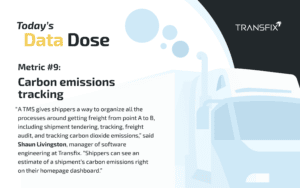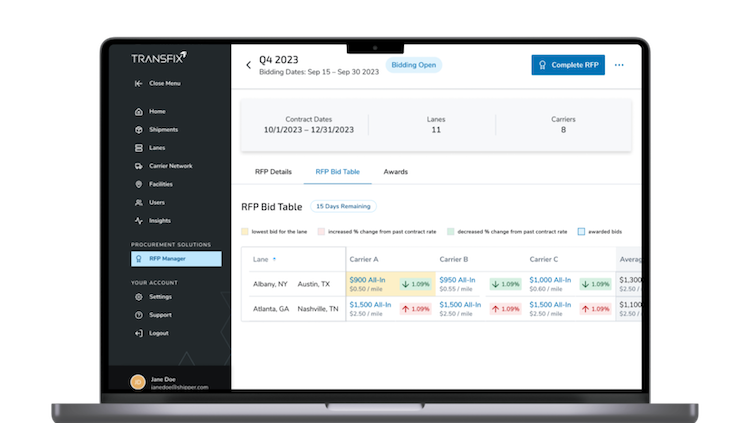Today’s Data Dose is an original Transfix series that helps shippers identify the key metrics they should track to get the most out of their supply chain. Which data measurements should an organization prioritize, considering their unique pain points, network, and goals?
We’ve got answers. We’ve got insights.

Metric 9: What’s the ‘So What’ of Tracking Carbon Emissions
Today’s Data Dose is carbon emissions tracking. It has been estimated that 9% of global greenhouse gas emissions come from the global road freight sector. As a result, various constituencies have become more interested in understanding companies’ sustainability efforts, and various regulatory bodies are requiring more transparency and imposing sustainability goals. Transportation managers are looking for ways to strategically utilize capacity and consolidate loads for a variety of reasons, including reducing carbon footprint. But how can carbon emissions be estimated and tracked within a transportation management system?
“A TMS gives shippers a way to organize all the processes around getting freight from point A to B, including shipment tendering, tracking, freight audit, and tracking carbon dioxide emissions,” said Shaun Livingston, manager of software engineering at Transfix. “Shippers can see an estimate of a shipment’s carbon emissions right on their homepage dashboard.”
The carbon emissions formula that Transfix uses is based on a trusted formula created by the Environmental Defense Fund, which calculates estimated emissions as a function of the mileage driven and the weight of the truck and freight. This tracker lives right alongside the relative number of shipments and transportation spend. Shippers can filter the chart by date range and mode, whether they use flatbed, reefer, dry van or all three.
Let’s say two different orders that need to be shipped to the same location come across the desk of a transportation coordinator. The TMS will help them identify these situations, provide the tools to consolidate multiple orders into a single shipment, and save a trip, which in turn lowers carbon emissions while still shipping the same volume. Shippers can then track success over time.
“You want to decrease the number of miles driven, because that’s how you get your carbon emissions to go down,” continued Livingston. “Shippers want to see their carbon emissions increase at a lower rate than their shipments do, or even go down. That way the organization is growing, while keeping ESG goals top of mind.”
Click here to learn more about Transfix’s Intelligent Freight Platform. And keep an eye out for our next Data Dose: #10, Dimensional Weight.




